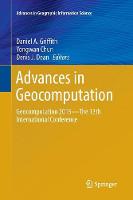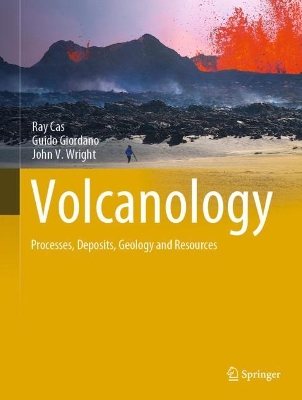Advances in Geocomputation
 -15%
portes grátis
-15%
portes grátis
Advances in Geocomputation
Geocomputation 2015--The 13th International Conference
Dean, Denis J.; Chun, Yongwan; Griffith, Daniel A.
Springer International Publishing AG
04/2018
447
Mole
Inglês
9783319794273
15 a 20 dias
6964
Descrição não disponível.
Preface.- Introduction.- The Nexus of Food, Energy, and Water Resources: Visions and Challenges in Spatial Computing.- The Bird's-Eye View from a Worm's-Eye Perspective.- Part I. Spatial Data: Construction, Representation, and Visualization.- High-Resolution Population Grids for the Entire Conterminous United States.- A Hybrid Dasymetric and Machine Learning Approach to High-Resolution Residential Electricity Consumption Modeling.- Can Social Media Play a Role in Developing Building Occupancy Curves?.- Application of Social Media Data to High Resolution Mapping of a Special Event Population.- Animating Maps: Visual Analytics Meets Geoweb 2.0.- Atvis: A New Transit Visualization System.- Mapping Spatiotemporal Patterns of Disabled People: The Case of the St. Jude's Storm Emergency.- Terra Populus: Challenges and Opportunities with Heterogeneous Big Spatial Data.- Part II. Spatial Analysis: Methods and Applications.- A Deviation Flow Refueling Location Model for Continuous Space: A Commercial Drone Delivery System for Urban Areas.- Exploring the Spatial Decay Effect in Mass Media and Location-Based Social Media: A Case Study of China.- Uncovering the Digital Divide and the Physical Divide in Senegal Using Mobile Phone Data.- Predicting Hourly Ozone Pollution in the Dallas-Fort Worth Area Using Spatiotemporal Clustering.- Does the Location of Amerindian Communities Provide Signals about the Spatial Distribution of Tree and Palm Species?.- World Climate Search and Classification Using a Dynamic Time Warping Similarity Function.- Attribute Portfolio Distance: A Dynamic Time Warping-Based Approach to Comparing and Detecting Common Spatiotemporal Patterns among Multiattribute Data Portfolios.- When Space Beats Time: A Proof of Concept with Hurricane Dean.- Using Soft Computing Logic and the Logic Scoring of Preference Method for Agricultural Land Suitability Evaluation.- Surgical Phase Recognition Using Movement Data from Video Imagery and Location Sensor Data.- Part III. Spatial Statistical and Geostatistical Modeling.- Respondent Driven Sampling and Spatial Autocorrelation.- The Moran Coefficient and the Geary Ratio: Some mathematical and numerical comparisons.- A Variance-Stabilizing Transformation to Mitigate Biased Variogram Estimation in Heterogeneous Surfaces with Clustered Samples.- Estimating a Variance Function of a Nonstationary Process.- The Statistical Distribution of Coefficients for Constructing Eigenvector Spatial Filters.- Spatial Data Analysis Uncertainties Introduced by Selected Sources of Error.- Spatiotemporal Epidemic Modeling with libSpatialSEIR: Specification, Fitting, Selection, and Prediction.- Geostatistical Models for the Spatial Distribution of Uranium in the Continental United States.- Modeling Land Use Change Using an Eigenvector Spatial Filtering Model Specification for Discrete Responses.- Part IV. Computational Challenges and Advances in Geocomputation: High Performance Computation and Dynamic Simulation.- From Everywhere to Everywhere (FETE): Adaptation of a Pedestrian Movement Network Model to a Hybrid Parallel Environment.- Parallelizing Affinity Propagation Using Graphics Processing Units for Spatial Cluster Analysis over Big Geospatial Data.- A Web-Based Geographic Information Platform to Support Urban Adaptation to Climate Change.- A Fully Automated High-Performance Image Registration Work Flow to Support Precision Geolocation for Imagery Collected by Airborne and Spaceborne Sensors.- MIRAGE: A Framework for Data-driven Collaborative High-resolution Simulation.- A Graph-Based Locality-Aware Approach to Scalable Parallel Agent-Based Models of Spatial Interaction.- Simulation of Human Wayfinding Uncertainties: Operationalizing a Wandering Disutility Function.- Design and Validation of Dynamic Hierarchies and Adaptive Layouts Using Spatial Graph Grammars.
Este título pertence ao(s) assunto(s) indicados(s). Para ver outros títulos clique no assunto desejado.
GIScience;GeoComputation Conference;Geocomputation;Geographic Information Systems;Geospatial Information Science;Spatial Analysis;quantitative geology;Environmental Geography
Preface.- Introduction.- The Nexus of Food, Energy, and Water Resources: Visions and Challenges in Spatial Computing.- The Bird's-Eye View from a Worm's-Eye Perspective.- Part I. Spatial Data: Construction, Representation, and Visualization.- High-Resolution Population Grids for the Entire Conterminous United States.- A Hybrid Dasymetric and Machine Learning Approach to High-Resolution Residential Electricity Consumption Modeling.- Can Social Media Play a Role in Developing Building Occupancy Curves?.- Application of Social Media Data to High Resolution Mapping of a Special Event Population.- Animating Maps: Visual Analytics Meets Geoweb 2.0.- Atvis: A New Transit Visualization System.- Mapping Spatiotemporal Patterns of Disabled People: The Case of the St. Jude's Storm Emergency.- Terra Populus: Challenges and Opportunities with Heterogeneous Big Spatial Data.- Part II. Spatial Analysis: Methods and Applications.- A Deviation Flow Refueling Location Model for Continuous Space: A Commercial Drone Delivery System for Urban Areas.- Exploring the Spatial Decay Effect in Mass Media and Location-Based Social Media: A Case Study of China.- Uncovering the Digital Divide and the Physical Divide in Senegal Using Mobile Phone Data.- Predicting Hourly Ozone Pollution in the Dallas-Fort Worth Area Using Spatiotemporal Clustering.- Does the Location of Amerindian Communities Provide Signals about the Spatial Distribution of Tree and Palm Species?.- World Climate Search and Classification Using a Dynamic Time Warping Similarity Function.- Attribute Portfolio Distance: A Dynamic Time Warping-Based Approach to Comparing and Detecting Common Spatiotemporal Patterns among Multiattribute Data Portfolios.- When Space Beats Time: A Proof of Concept with Hurricane Dean.- Using Soft Computing Logic and the Logic Scoring of Preference Method for Agricultural Land Suitability Evaluation.- Surgical Phase Recognition Using Movement Data from Video Imagery and Location Sensor Data.- Part III. Spatial Statistical and Geostatistical Modeling.- Respondent Driven Sampling and Spatial Autocorrelation.- The Moran Coefficient and the Geary Ratio: Some mathematical and numerical comparisons.- A Variance-Stabilizing Transformation to Mitigate Biased Variogram Estimation in Heterogeneous Surfaces with Clustered Samples.- Estimating a Variance Function of a Nonstationary Process.- The Statistical Distribution of Coefficients for Constructing Eigenvector Spatial Filters.- Spatial Data Analysis Uncertainties Introduced by Selected Sources of Error.- Spatiotemporal Epidemic Modeling with libSpatialSEIR: Specification, Fitting, Selection, and Prediction.- Geostatistical Models for the Spatial Distribution of Uranium in the Continental United States.- Modeling Land Use Change Using an Eigenvector Spatial Filtering Model Specification for Discrete Responses.- Part IV. Computational Challenges and Advances in Geocomputation: High Performance Computation and Dynamic Simulation.- From Everywhere to Everywhere (FETE): Adaptation of a Pedestrian Movement Network Model to a Hybrid Parallel Environment.- Parallelizing Affinity Propagation Using Graphics Processing Units for Spatial Cluster Analysis over Big Geospatial Data.- A Web-Based Geographic Information Platform to Support Urban Adaptation to Climate Change.- A Fully Automated High-Performance Image Registration Work Flow to Support Precision Geolocation for Imagery Collected by Airborne and Spaceborne Sensors.- MIRAGE: A Framework for Data-driven Collaborative High-resolution Simulation.- A Graph-Based Locality-Aware Approach to Scalable Parallel Agent-Based Models of Spatial Interaction.- Simulation of Human Wayfinding Uncertainties: Operationalizing a Wandering Disutility Function.- Design and Validation of Dynamic Hierarchies and Adaptive Layouts Using Spatial Graph Grammars.
Este título pertence ao(s) assunto(s) indicados(s). Para ver outros títulos clique no assunto desejado.







